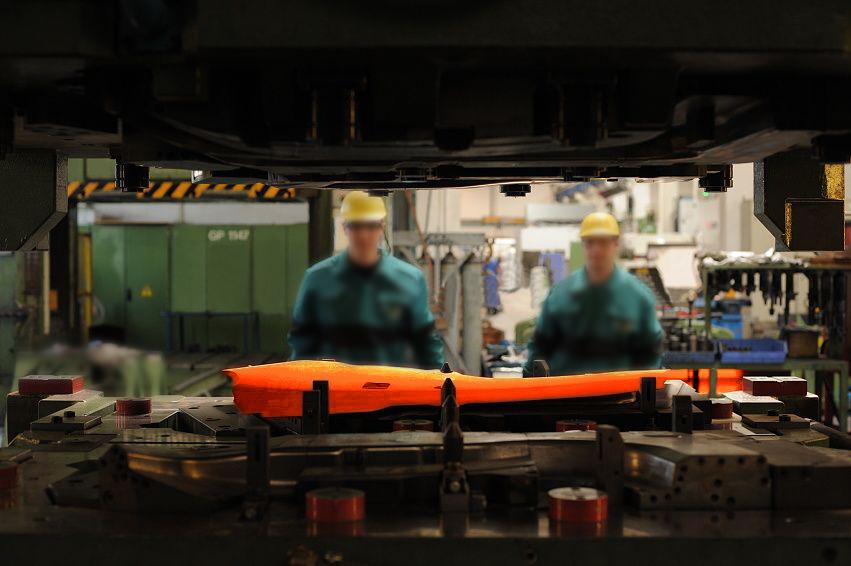Contents: Direct and Indirect Hot Forming
- General information about hot forming
- Direct hot forming
- Indirect hot forming
- Conclusion
General information about hot forming
Hot forming of materials, such as steel, takes place above the austenitization temperature, a critical threshold at which the blank is fully recrystallized. This temperature is typically around 900 °C. In this process, the material structure undergoes significant changes: hardness decreases while formability significantly increases. However, the resistance a material presents to hot forming is not solely dependent on temperature. Other crucial factors include forming speed, the overall structure of the material, and the alloying elements used.
A general advantage of hot forming is the minimal springback and low forming forces, which allow for low residual stresses and thus enable the production of extremely complex components. A potential disadvantage, however, is the formation of scale on uncoated steels, which occurs due to the reaction of oxygen with iron.
Direct Hot Forming
Direct hot forming is the preferred method in numerous automotive press shops for manufacturing steel components. In this process, the blank is first preheated to the austenitization temperature in a furnace, such as a continuous furnace. It is then formed directly in a forming press using the tool, minimizing transfer time. The first step in the hot forming tool involves forming the blank. This is followed by a brief holding period in the die to cool it down. After this step, the blank is removed from the tool, by which time it is fully hardened and dimensionally stable. Direct hot forming does not allow for zinc coating and also requires laser cutting of the component after forming.
Indirect Hot Forming
Indirect hot forming is not as commonly used in the automotive industry as the direct method. Unlike the direct method, indirect hot forming involves the use of intermediate tools to shape the blank into the desired form before heating. This first step is referred to as primary forming. Only after this is the material heated and then formed and cooled as in direct hot forming. The intermediate step of primary forming allows for higher degrees of forming with less component distortion, hence indirect hot forming is often used when it comes to the production of extremely complex and precise components. The advantages of the indirect method include the finished trim before hardening and the possibility of full galvanization of the material. However, this is offset by higher production costs and longer cycle times, due to the additional forming step.
Conclusion
Direct and indirect hot forming are two important methods in the metal processing industry. Both methods have their own advantages and application areas. The choice between direct and indirect hot forming depends on various factors, such as the complexity of the desired shape, the mechanical properties of the metal, and the economic aspects of production. Engineers and manufacturers make their decisions based on these factors to achieve the best results and meet the requirements of their specific applications. Overall, hot forming enables the production of high-quality components and plays a crucial role in many industries.
